Irrigation management is the process of timing and managing water use to meet crop water needs without wasting water, energy, and plant nutrients or depleting soil resources. Water is an important agricultural production input and plays an important role in food security.
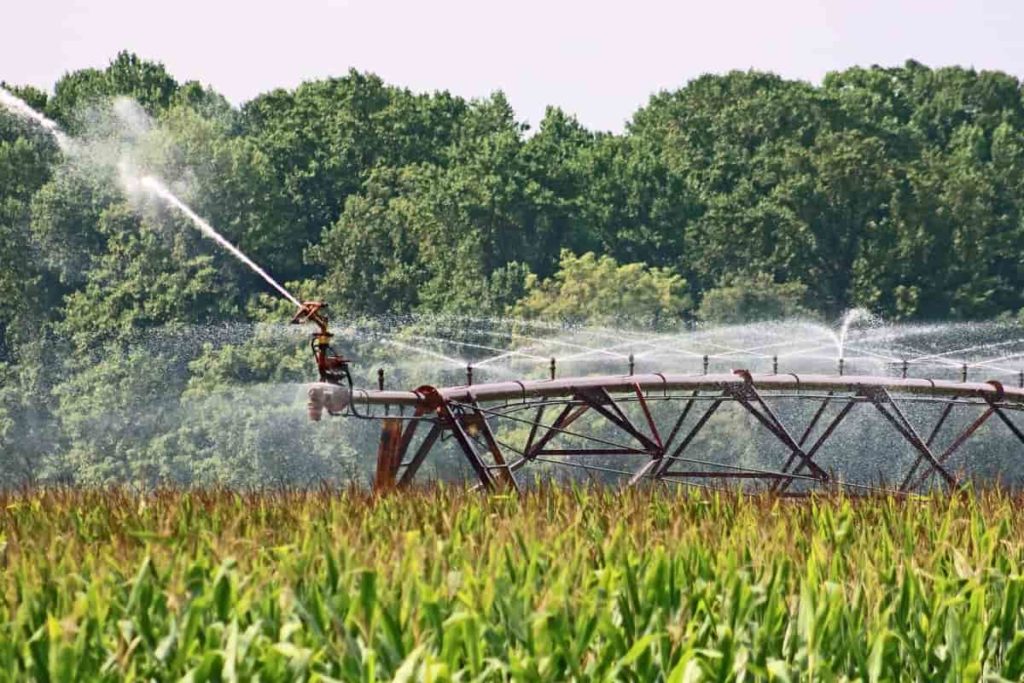
A guide to understanding irrigation management
What is irrigation?
It is the method of artificially applying water to crops to meet their water requirements. Crops can also be supplied with nutrients through irrigation. The various sources of water for irrigation are wells, ponds, lakes, canals, tube wells, and even dams. Irrigation provides moisture required for growth and development, germination, and other related functions. The frequency, rate, quantity, and timing of irrigation vary for different crops according to soil types and climates. For example, summer crops require more water than winter crops.
Soil irrigation is the process by which we can use the water supplied to any land according to its needs for various purposes. The interval of water supply requirement of a particular planting can also be controlled by irrigation. It helps grow crops in abundance by preserving soil structure for better growth. It also helps maintain topography, plus it helps plants grow back into the loam. The net result of proper irrigation water management is usually:
- Prevents excessive water use.
- Reduces pumping costs.
- Prevents excessive soil erosion.
- Reduces labor.
- Maintains or improves groundwater and surface water quality.
- Increases crop biomass yield and product quality.
Why is irrigation necessary?
Irrigation helps in the cultivation of high-quality crops by supplying water as per the requirement of the crops. Ultimately this helps in economic development. Irrigation water improves soil water status, increases the water content of plant fibers, dissolves nutrients, and makes them available to plants. Irrigation and drainage can improve or damage ecosystems and the environment. Problems associated with irrigated agriculture include erosion, sedimentation of surface waters, chemical and nutrient contamination of water supplies, and salinity.
In case you missed it: 16 Key Rules for Effective Irrigation Management: From Planning to Reduce Production Cost
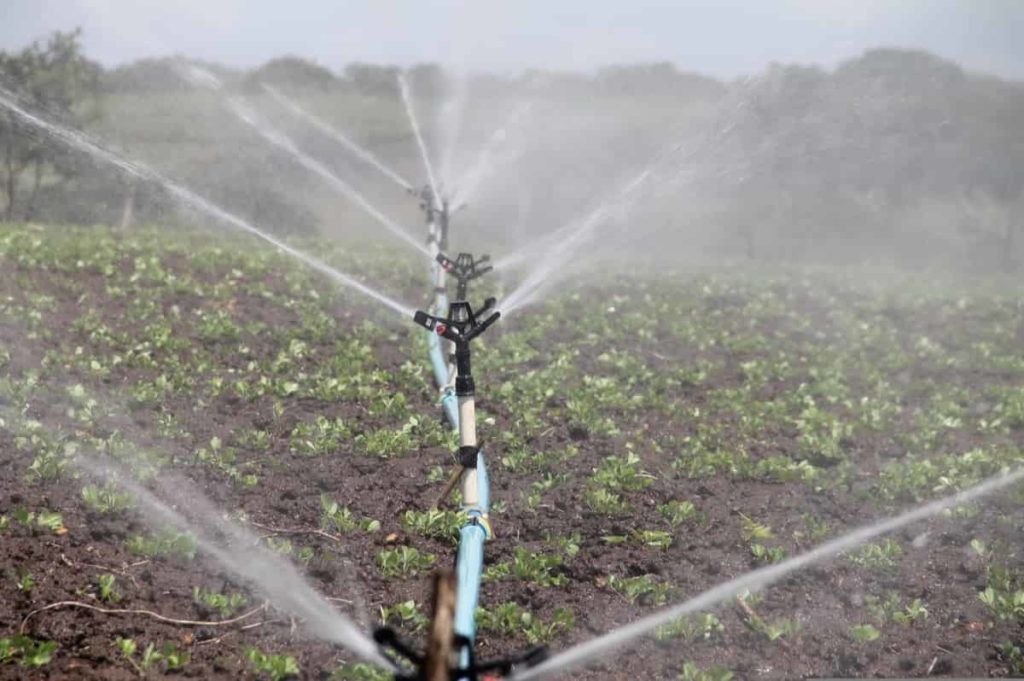
Irrigation is watering crops, pastures, and plants using water delivered through pipes, sprinklers, canals, sprays, pumps, and other man-made features, rather than relying purely on rainfall. It is a modern irrigation method to help plants grow as it is applied as an alternative to rain-fed farming. In general, the main objectives of irrigation management are to promote proper plant growth and maintain proper soil moisture levels.
Why do irrigation systems fail?
Leaky sprinkler heads – When you run your irrigation sprinklers day in and day out, they are bound to develop leaks. These problems occur when your sprinkler heads become worn and damaged, making it difficult for them to cut off the water flow. Over time, this can cause your field to waste water and even overwater crops in affected areas. Therefore, you must regularly inspect these components for damage and replace them.
Pressure loss – It is common for irrigation systems to experience severe water pressure losses. It isn’t easy to spread the runoff evenly among your fields without enough pressure to push the water out of the sprinkler heads. It can lead to overwatering some plants and under watering others. Inspect the pumping system and monitor its registered pressure to troubleshoot these problems. Low-pressure irrigation requires only 30 psi, while high-pressure setups should read closer to 60 psi.
Piping blockages – Another common farm irrigation system problem to watch is piping blockages. As hard as many try to avoid it, we always get stuck in our irrigation pipes. It can result from mineral accumulation or penetration into the tree’s roots over time. Either way, these blockages can stress your system and hinder its performance.
What are the principles of irrigation?
Soil moisture – Sites for soil moisture monitoring should be selected that are most representative of the field. Its main purpose is to limit water in heavy soils and overwatering light soils. For precision irrigation, where water can be controlled in small regions within the field, more monitors will be needed, and monitoring of improved and poorer soils will be required.
Root zone depth – The root zone depth is the zone where most of the root structure is found. As a general rule, it changes with different varieties, but the roots will extend 18 inches below the seed piece.
Effective irrigation – It is the amount of water that reaches the root zone and is available to the plant. Some water or actual irrigation is lost due to runoff, evaporation, or deep percolation.
Daily water consumption – Potatoes’ water consumption depends on the plant’s growth stage and the day’s environmental conditions. It is directly related to the development of the canopy, mostly leaves with almost all stomata. Some environmental conditions that affect daily water use are air temperature level, relative humidity, wind, and solar radiation.
Greenhouse watering requirement – Greenhouse crops use water continuously, but the use rate depends on plant species, size, temperature, and environmental conditions. The high water requirement of plants is indicated by the fact that 300 to 500 pounds of water are necessary to produce one pound of dry organic matter. Although water performs many functions in a plant, more than 99 percent of absorbed water is lost to the environment.
Crop factors – The water requirements of container-grown plants vary due to age, succulent growth, and plant species. Small plants with little top growth need less water because they lose less through transpiration than larger plants. Succulent plants usually wilt quickly as the tissue contains more water. And plants with large thin leaves absorb and transpire water more quickly than plants with small thick leaves. Plants in the greenhouse or nursery should be grouped according to their species, container size and type, growth rate, and moisture requirements.
In case you missed it: Drip Irrigation for Vegetables – a Full Guide
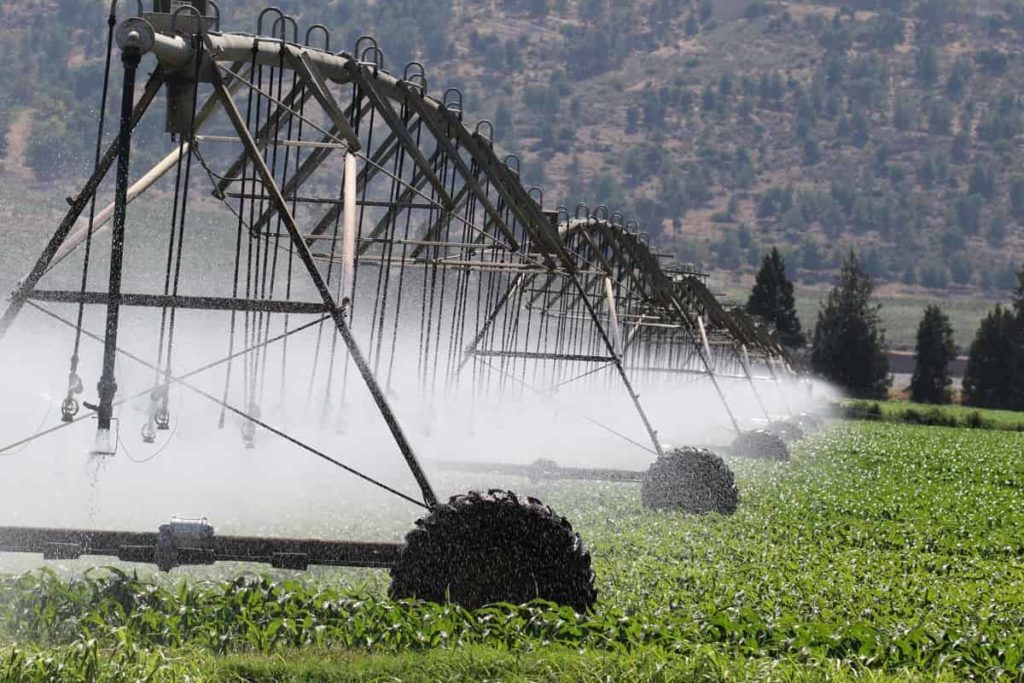
Water factors – Irrigation water quality is very important in greenhouse crop production because of the undesirable chemicals in some water. Water sources should be checked for quality when planning a new or expanding operation.
What tools are used for irrigation?
- Irrigation tools farmers can use to save on water costs. Irrigation tools are sold in several categories, including drip and subsurface irrigation tools, sprinklers, hoses, and irrigation timers.
- Drip irrigation tools such as connectors, piping, and sprinklers create overhead irrigation systems.
- Important irrigation tools are Spade, Shovel, Tracked Excavator, Water Flow Meters, Soil Sensors, and Drones.
How do you improve irrigation?
- You can improve irrigation efficiency by adopting practices such as irrigation scheduling, deficit irrigation, conservation tillage, and installing more efficient irrigation systems.
- Sprinkler and drip irrigation systems are more efficient than furrow irrigation.
What are the types of agricultural water use?
1. Rain-fed agriculture – Rain-fed agriculture is directly by rainfall. Soil has a natural use of water. Relying on rain reduces the chance of contamination of food items, but water shortages occur when rainfall is low. On the other hand, the artificial use of water increases the risk of pollution.
2. Irrigation – Irrigation is the artificial application of water to the soil through various systems of tubes, pumps, and sprays. Irrigation is generally used when rainfall is irregular or dry spells or droughts are expected. Irrigation can come from groundwater, through springs or wells, surface water, rivers, lakes, reservoirs, or other sources, such as treated wastewater or treated water. As a result, growers must protect their agricultural water sources to reduce the potential for contamination. As with groundwater removal, irrigation water users must be careful not to pump out groundwater faster than the water recharges.
What are the main objectives of irrigation management?
1. There is not enough rain to support crop growth – This can be due to rainy and dry seasons, drought, or arid/semi-arid climate conditions. Irrigation systems can also maintain constant moisture levels even in areas with moderate rainfall, which has been shown to improve crop performance.
2. High soil salinity levels – High soil salinity levels can be a natural phenomenon in many semi-arid and arid regions or result from poor agricultural practices and ineffective drainage. In cases affected by soil salt levels, irrigation must often be combined with drainage to achieve the desired benefits.
What are the types of irrigation?
There are different types of irrigation to improve crop production. These types of irrigation systems are based on different types of soil, climate, crops, and resources. The main types of irrigation used by farmers include:
1. Surface irrigation – No irrigation pump is involved in this system. Water is distributed by gravity throughout the land. Gravity distributes water evenly throughout the earth and does not require any machine to maintain it.
It consists of many irrigation methods in which the water is scattered; the things you need before introducing the irrigation water in the basin are siphons and gated pipes. This system best suits areas with parallel slopes or flat surfaces and moderately fine-textured soil types. It helps the surface to spread the water even as it moves down into the basin. There are three types of surface irrigation:
- Basin irrigation
- Furrow irrigation
- Flood irrigation
In case you missed it: Lift Irrigation Farming in India, Importance of Lift Irrigation
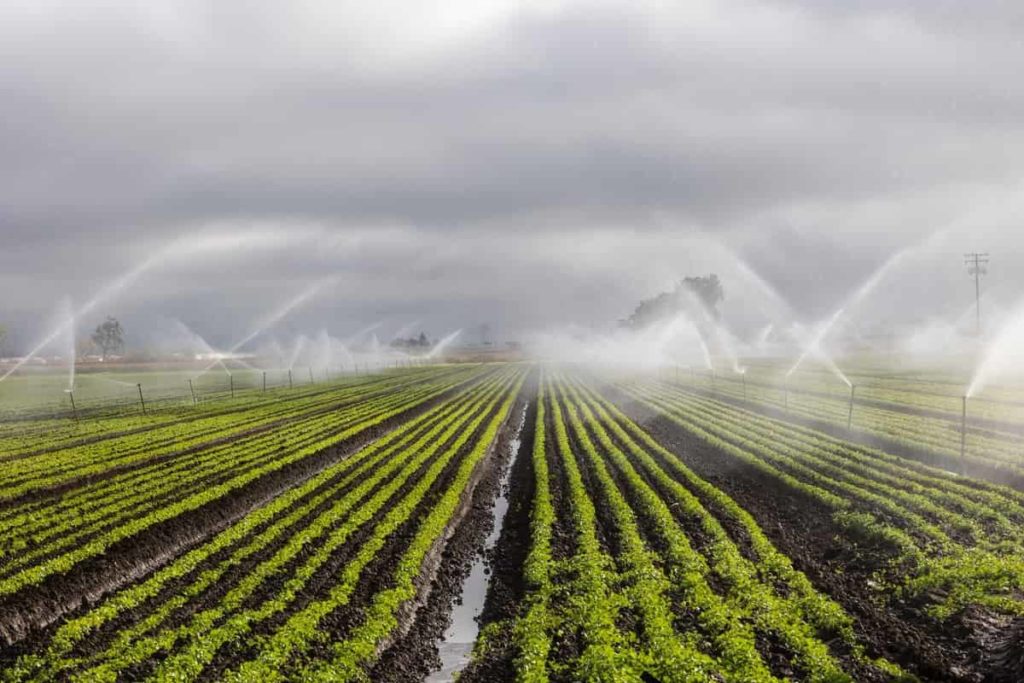
2. Localized irrigation – Water is applied to each plant through a network of pipes under low pressure.
3. Sprinkler irrigation – Water is distributed from a central location by high-pressure overhead sprinklers from a moving platform. As the name suggests, a sprinkler system sprinkles water on the crop and helps in uniform water distribution. This method is more suitable in areas facing water scarcity. Here a pump is connected to the pipes, which creates pressure, and water is sprayed through the nozzles of the pipes.
4. Drip Irrigation – In this type, drops of water are delivered close to the roots of the plants. In a drip system, water is delivered drop by drop to the roots using a hose or pipe. This method can also be used in areas where water availability is low.
This is a type of localized irrigation in which droplets of water are delivered to or near the plant roots. Evaporation and runoff are minimized in this type of irrigation. Water flows through narrow pipes on the fields and drips through small holes (emitters) directly to the plant’s root zone. Roots absorb water and nourish the plant. This method does not waste water; less water is lost through evaporation, runoff, and wind.
- Improves soil moisture, conserves water
- Direct plant root hydration for plant health
- It prevents weed growth because water is applied directly to plants, not spread around the field
- Bacterial growth is limited because the area near the plants is dry
5. Centre-pivot irrigation – Water is distributed through a sprinkler system that moves in a circular pattern.
6. Sub-irrigation – Water distribution is done by raising the water table through pumping station gates, ditches and canals.
7. Lateral-move irrigation – Water is scattered across the land through a series of pipes or water lines, which can be controlled either by hand or by a man-made machine to sprinkle water across the land. The sprinkler travels only a recommended distance across the field, and the water hose needs to be reconnected to cover the next distance for the next land. Compared to other irrigation systems, lateral irrigation systems are cheap but require a lot of labor or manpower.
8. Manual irrigation – Water is spread evenly around the field with the help of manual power, such as laborers and watering cans. This system is very labor intensive.
How does irrigation impact the environment?
- Irrigation causes an increase in water vapor, affecting air temperature, pressure, and atmospheric humidity.
- Crop irrigation can affect rainfall patterns in the irrigated area and thousands of miles away.
What are the benefits of irrigation in agriculture?
Crops require a certain amount of water to grow properly. If the rains are insufficient, there will be a shortfall in meeting the water needs. Irrigation tries to overcome this deficiency caused by insufficient rainfall. Thus, irrigation comes to the rescue in dry years. Irrigation also increases the wealth of the country in two ways.
Firstly, because irrigation produces bumper crops, it makes the country self-sufficient in food requirements. Secondly, irrigation water is taxed when supplied to farmers, thereby increasing revenue. Irrigation makes it possible to grow cash crops that give farmers better returns than the common crops they would have grown without irrigation. Orchards, Sugarcane, Potatoes, Tobacco, etc., are cash crops.
Saves time – An automatic irrigation system will save you a lot of time that you used to spend watering your lawn, gardens, and flowers in the past. Now you can set your timers so that the water is at a time that suits your landscape and the climate you live in. You can go on vacation knowing that the lawn and flowers will be intact and thriving when you return.
Saves money – No money or water is wasted with automatic irrigation systems because everything is timed and programmed. All these systems have rain sensors, so every drop of water is applied when needed.
Improves growth – When plants, crops, lawns, or flowers are watered in small amounts over a long period, they grow faster because this is the best condition for growth. You will enjoy greener and more pleasant gardens and lawns.
In case you missed it: Drip Irrigation Cost per Acre in India – A Full Guide
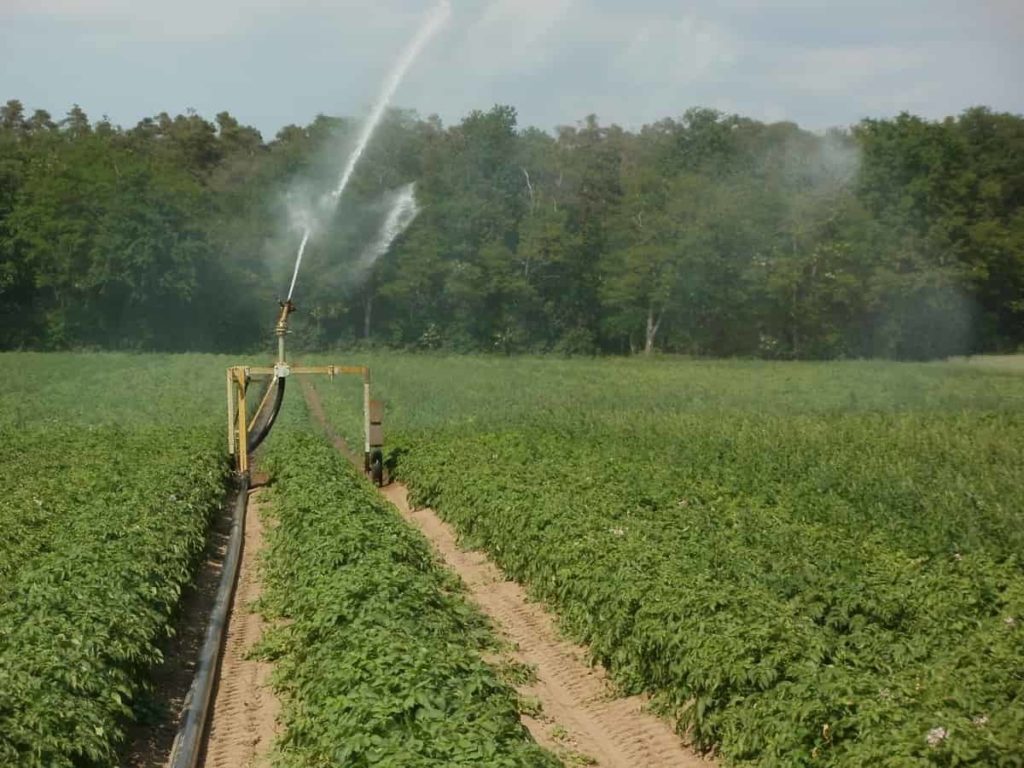
Weed reduction – You will notice a reduction in the amount of weed you see because the areas that need water are the only areas that receive water, especially in designed irrigation systems.
What are the problems in irrigation management?
- Delay in project completion
- Water conflicts
- Regional contrasts in irrigation development
- Salinity and waterlogging
- Increase in irrigation costs
- Losses in working on irrigation projects
- Growth in structure and aging of infrastructure
What is the importance of irrigation?
The irrigation system helps grow crops, maintain the landscape, and regenerate disturbed soils in dry areas. The irrigation system has other uses in crop production, including frost protection, weed control in grain fields, and soil stabilization. Irrigation is important for a country like India as rainfall is seasonal. It is limited to four months of the year. It is also important because some crops require more water than what we get from rain, so we have to rely on irrigation.
Irrigation increases agricultural productivity through both expansion of cultivable area and higher crop yields under rain-fed agriculture. Irrigation of crops is an agricultural practice that is thousands of years old in human history. Despite significant technological advances over time, the basic purpose of irrigation remains the same: to supplement available water through rainfall to increase crop production and quality.
Irrigation helps in the cultivation of superior crops by supplying water according to the needs of the crops. Ultimately this helps in economic development. Irrigation water improves soil water status, increases the water content of plant fibers, dissolves nutrients, and makes them available to plants. Without rainfall or irrigation, crops are adversely affected, leading to food shortages or crop/plant failure.
Irrigation increases the amount of arable or agriculturally productive land. Some areas of the world are naturally arid. Irrigation is responsible for converting such lands into cultivable lands. Today, about 18% of the world’s cropland is now irrigated. Irrigation is also responsible for making the most of fallow lands, traditionally left fallow after harvest, before the next cropping season.
What are the methods of irrigation?
1. Traditional Methods – In this method, irrigation is done manually. Here, a farmer draws water from wells or canals by himself or using cattle and carries it to the farm. This method may vary from region to region. Some conventional systems are pulley systems, lever systems, and chain pumps. Among them, the pump system is the most common and widely used.
2. Modern methods of irrigation – The modern method compensates for the disadvantages of traditional methods and thus helps properly use water. The modern method involves two systems. They are the sprinkler system and the drip system.
What is the importance of a drip irrigation system?
- It is one of the most effective methods to water crops with minimal waste. Water flow meters can accurately estimate how much water is being used for irrigation so that water use can be properly managed and unnecessary watering can be avoided. Using the flow rate from a flowmeter, the amount of water used for irrigation can be estimated for a specific period. Monitoring flow rates can also help farmers discover problems with irrigation systems, such as costly leaks, and are one of the simplest irrigation tools.
- Measuring soil properties such as moisture can help farmers determine how much water is necessary to irrigate crops properly.
- Agricultural farms will eventually account for 80 percent of the commercial drone market. Thermal cameras on drones can detect leaks and determine if crops are getting too much or too little water.
What are the requirements for the success of an irrigation project?
- Properly designed and maintained irrigation systems for efficient and uniform water delivery; should be kept.
- An irrigation water measuring device (flow meter) should be installed at each well. Irrigators must know if they are applying the required amount of water.
- A rain gauge is a simple but essential tool in irrigation water management. It can determine how much rainfall to credit to a field’s soil water balance.
- Various soil moisture sensors will help you monitor soil water content and irrigation practices.
- A reliable source of crop water use information is important when determining irrigation timing. It can be used to help find the amount and timing of irrigation. Information on crop water use can be obtained from many sources, including television, radio, the Internet, and telephone hotlines. Average estimates of crop water use will often overestimate crop water use needs and often underestimate crop water use needs. Thus the use of timely, accurate information is essential.
In case you missed it: Solar Drip Irrigation System Benefits, Model
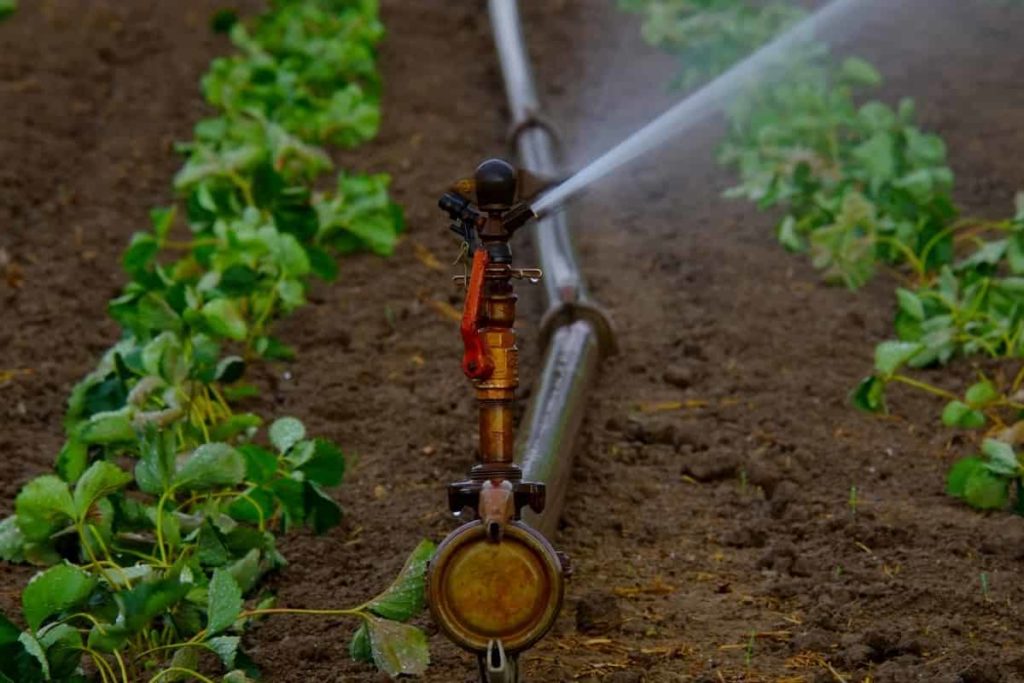
What are the practical challenges for irrigation in agriculture?
The capacity to improve water management in agriculture is generally limited by inadequate policies, major institutional inefficiencies, and financial constraints. Key public and private institutions (including ministries of agriculture and water, basin authorities, irrigation agencies, water users, and farmers’ organizations) generally lack the enabling environment and necessary capacities to carry out their work effectively.
For example, basin authorities often have limited capacity to implement water allocations and convene stakeholders. Irrigation promotion agencies often limit themselves to large-scale investment schemes and rely on public sector-based approaches rather than creating opportunities for small-scale private financing and irrigation management. Farmers and their organizations often respond to highly distorted incentive frameworks about water pricing and agricultural support policies, further hindering positive developments in the sector.
Conclusion
The irrigation system aims to increase food production, contribute to economic growth and reduce poverty through improved efficiency, productivity, and sustainability of irrigation systems. Therefore, it is necessary to provide irrigation for the production of crops, etc. Monsoons are uncertain. Therefore, irrigation is essential to protect crops from drought due to erratic rainfall. Irrigation improves crop production and makes people prosperous, which improves the quality of life of people.
- Types of Pesticides Used in Agriculture: A Beginner’s Guide
- Economical Aquaculture: A Guide to Low-Budget Fish Farming
- 15 Common Planting Errors That Can Doom Your Fruit Trees
- How to Make Houseplants Bushy: Effective Tips and Ideas
- Innovative Strategies for Boosting Coconut Pollination and Yield
- Pollination Strategies for Maximum Pumpkin Yield
- The Complete Guide to Chicken Fattening: Strategies for Maximum Growth
- Natural Solutions for Tulip Problems: 100% Effective Remedies for Leaf and Bulb-Related Issues
- Revolutionizing Citrus Preservation: Towards a Healthier, Greener Future
- Natural Solutions for Peony Leaf and Flower Problems: 100% Effective Remedies
- Maximizing Profits with Avocado Contract Farming in India: A Comprehensive Guide
- Natural Solutions for Hydrangea Problems: 100% Effective Remedies for Leaf and Flowers
- The Ultimate Guide to Choosing the Perfect Foliage Friend: Bringing Life Indoors
- From Sunlight to Sustainability: 15 Ways to Use Solar Technology in Agriculture
- The Ultimate Guide to Dong Tao Chicken: Exploring from History to Raising
- The Eco-Friendly Makeover: How to Convert Your Unused Swimming Pool into a Fish Pond
- Mastering the Art of Delaware Chicken Farming: Essentials for Healthy Backyard Flocks
- 20 Best Homemade Fertilizers for Money Plant: DIY Recipes and Application Methods
- How to Craft a Comprehensive Free-Range Chicken Farming Business Plan
- Brighten Your Flock: Raising Easter Egger Chickens for Beauty and Bounty
- How to Optimize Your Poultry Egg Farm Business Plan with These Strategies
- Subsidy for Spirulina Cultivation: How Indian Government Schemes Encouraging Spirulina Farmers
- Ultimate Guide to Raising Dominique Chickens: Breeding, Feeding, Egg-Production, and Care
- Mastering the Art of Raising Jersey Giant Chickens: Care, Feeding, and More
- Ultimate Guide to Raising Legbar Chickens: Breeding, Farming Practices, Diet, Egg-Production
- How to Raise Welsummer Chickens: A Comprehensive Guide for Beginners
- How to Protect Indoor Plants in Winter: A Comprehensive Guide
- Ultimate Guide to Grow Bag Gardening: Tips, Tricks, and Planting Ideas for Urban Gardeners
- Guide to Lotus Cultivation: How to Propagate, Plant, Grow, Care, Cost, and Profit
- Agriculture Drone Subsidy Scheme: Government Kisan Subsidy, License, and How to Apply Online
- Ultimate Guide to Raising Araucana Chickens: Breed Profile, Farming Economics, Diet, and Care
- Bringing Hydroponics to Classroom: Importance, Benefits of Learning for School Students
- Ultimate Guide to Raising Polish Chickens: Breed Profile, Farming Economics, Diet, and Care
- Ultimate Guide to Raising Australorp Chickens: Profile, Farming Economics, Egg Production, Diet, and Care
- Silkie Chicken Farming: Raising Practices, Varieties, Egg Production, Diet, and Care
- Sussex Chicken Farming: Raising Practices, Varieties, Egg Production, Diet and Care
- Types of Pesticides Used in Agriculture: A Beginner’s Guide
- Economical Aquaculture: A Guide to Low-Budget Fish Farming
- 15 Common Planting Errors That Can Doom Your Fruit Trees
- How to Make Houseplants Bushy: Effective Tips and Ideas
- Innovative Strategies for Boosting Coconut Pollination and Yield
- Pollination Strategies for Maximum Pumpkin Yield
- The Complete Guide to Chicken Fattening: Strategies for Maximum Growth
- Natural Solutions for Tulip Problems: 100% Effective Remedies for Leaf and Bulb-Related Issues
- Revolutionizing Citrus Preservation: Towards a Healthier, Greener Future
- Natural Solutions for Peony Leaf and Flower Problems: 100% Effective Remedies
- Maximizing Profits with Avocado Contract Farming in India: A Comprehensive Guide
- Natural Solutions for Hydrangea Problems: 100% Effective Remedies for Leaf and Flowers
- The Ultimate Guide to Choosing the Perfect Foliage Friend: Bringing Life Indoors
- From Sunlight to Sustainability: 15 Ways to Use Solar Technology in Agriculture
- The Ultimate Guide to Dong Tao Chicken: Exploring from History to Raising
- The Eco-Friendly Makeover: How to Convert Your Unused Swimming Pool into a Fish Pond
- Mastering the Art of Delaware Chicken Farming: Essentials for Healthy Backyard Flocks
- 20 Best Homemade Fertilizers for Money Plant: DIY Recipes and Application Methods
- How to Craft a Comprehensive Free-Range Chicken Farming Business Plan
- Brighten Your Flock: Raising Easter Egger Chickens for Beauty and Bounty
- How to Optimize Your Poultry Egg Farm Business Plan with These Strategies
- Subsidy for Spirulina Cultivation: How Indian Government Schemes Encouraging Spirulina Farmers
- Ultimate Guide to Raising Dominique Chickens: Breeding, Feeding, Egg-Production, and Care
- Mastering the Art of Raising Jersey Giant Chickens: Care, Feeding, and More
- Ultimate Guide to Raising Legbar Chickens: Breeding, Farming Practices, Diet, Egg-Production
- How to Raise Welsummer Chickens: A Comprehensive Guide for Beginners
- How to Protect Indoor Plants in Winter: A Comprehensive Guide
- Ultimate Guide to Grow Bag Gardening: Tips, Tricks, and Planting Ideas for Urban Gardeners
- Guide to Lotus Cultivation: How to Propagate, Plant, Grow, Care, Cost, and Profit
- Agriculture Drone Subsidy Scheme: Government Kisan Subsidy, License, and How to Apply Online
- Ultimate Guide to Raising Araucana Chickens: Breed Profile, Farming Economics, Diet, and Care
- Bringing Hydroponics to Classroom: Importance, Benefits of Learning for School Students
- Ultimate Guide to Raising Polish Chickens: Breed Profile, Farming Economics, Diet, and Care
- Ultimate Guide to Raising Australorp Chickens: Profile, Farming Economics, Egg Production, Diet, and Care
- Silkie Chicken Farming: Raising Practices, Varieties, Egg Production, Diet, and Care
- Sussex Chicken Farming: Raising Practices, Varieties, Egg Production, Diet and Care